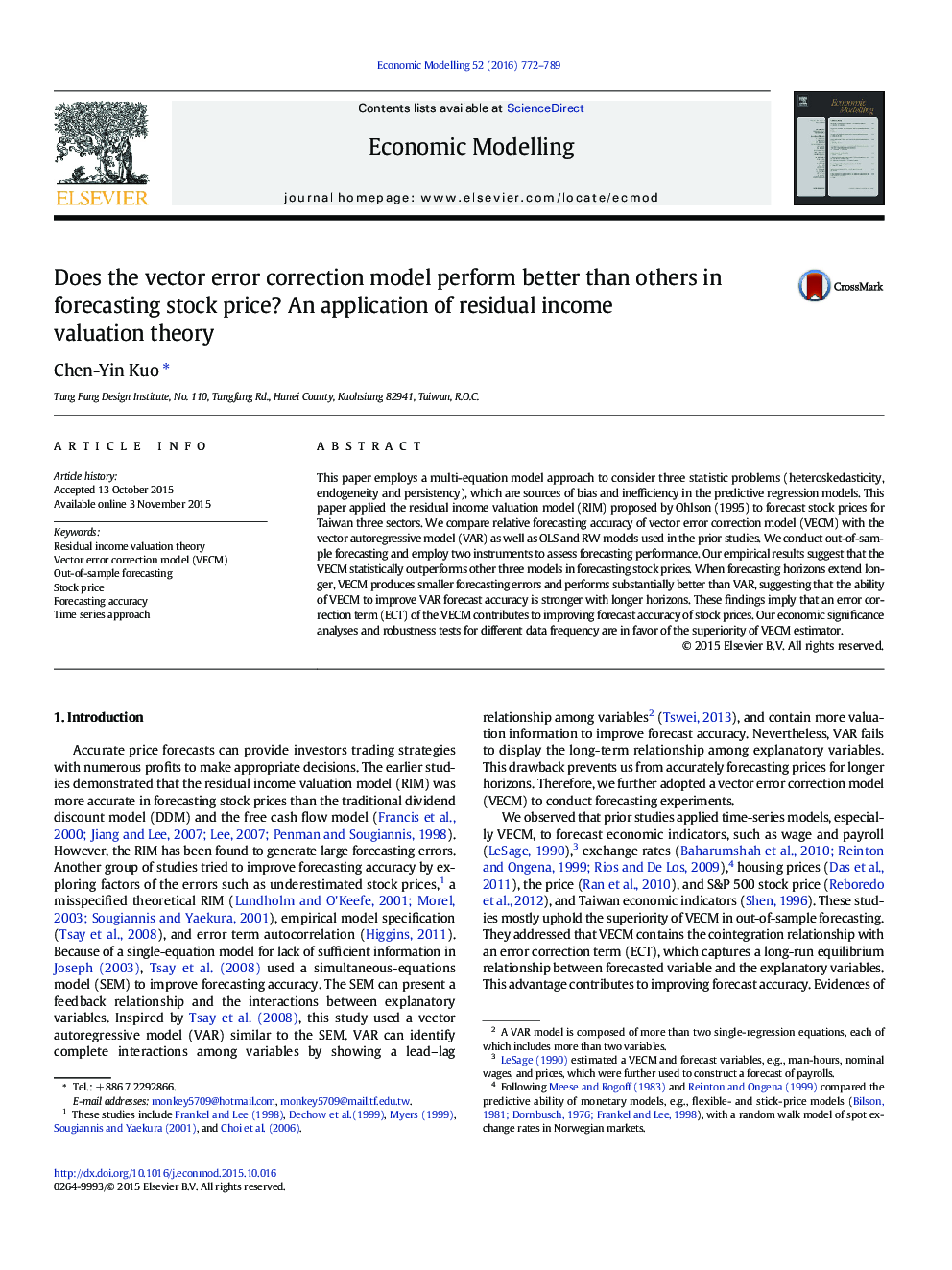| Article ID | Journal | Published Year | Pages | File Type |
|---|---|---|---|---|
| 5053676 | Economic Modelling | 2016 | 18 Pages |
Abstract
This paper employs a multi-equation model approach to consider three statistic problems (heteroskedasticity, endogeneity and persistency), which are sources of bias and inefficiency in the predictive regression models. This paper applied the residual income valuation model (RIM) proposed by Ohlson (1995) to forecast stock prices for Taiwan three sectors. We compare relative forecasting accuracy of vector error correction model (VECM) with the vector autoregressive model (VAR) as well as OLS and RW models used in the prior studies. We conduct out-of-sample forecasting and employ two instruments to assess forecasting performance. Our empirical results suggest that the VECM statistically outperforms other three models in forecasting stock prices. When forecasting horizons extend longer, VECM produces smaller forecasting errors and performs substantially better than VAR, suggesting that the ability of VECM to improve VAR forecast accuracy is stronger with longer horizons. These findings imply that an error correction term (ECT) of the VECM contributes to improving forecast accuracy of stock prices. Our economic significance analyses and robustness tests for different data frequency are in favor of the superiority of VECM estimator.
Keywords
Related Topics
Social Sciences and Humanities
Economics, Econometrics and Finance
Economics and Econometrics
Authors
Chen-Yin Kuo,
